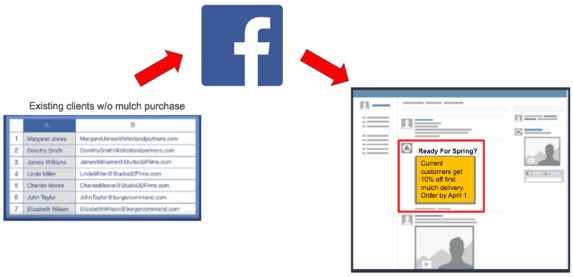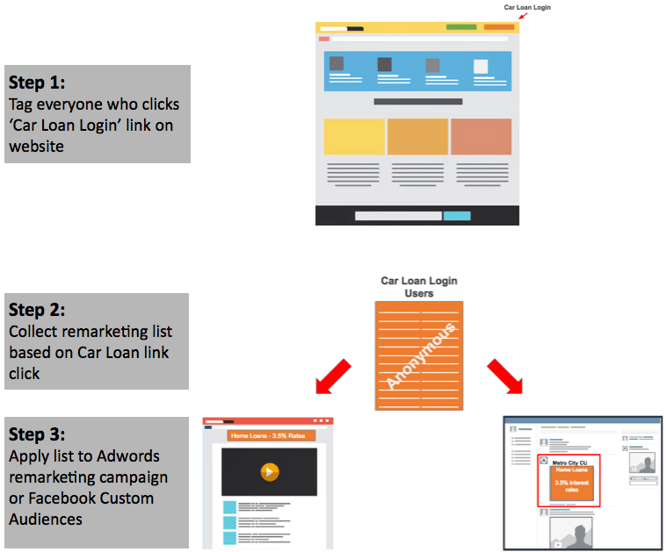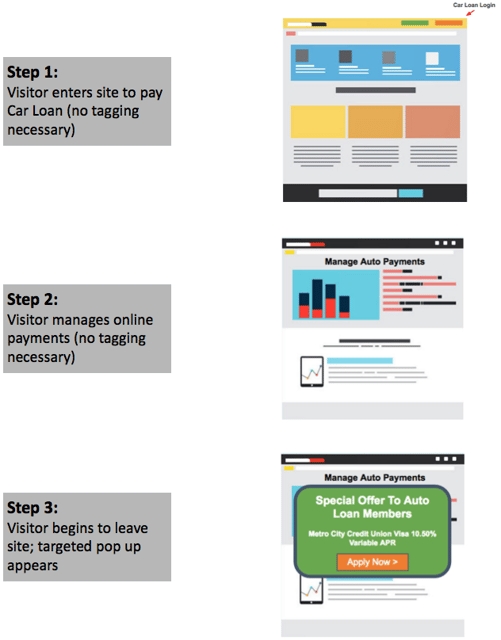As your competitors become more savvy with online advertising, finding an edge becomes critically important. Otherwise, you risk doing overdoing all the same tactics as your competitors.
While many businesses obsess over new customer acquisition, finding ways to increase current customer value has become an untapped resource. Cross-selling through remarketing is the answer to a question not enough businesses are asking; that question being “how can I increase the average value of a customer through online channels?”
What Is Cross-Selling:
Cross selling is defined as selling a different product or service to an existing customer. You’ve likely come across this many times while shopping online. Seeing a knife sharpener on the checkout page while buying a kitchen knife is an example of cross-selling.
Cross-Selling For Non-Ecommerce Businesses
When you search online for cross-selling strategies, you find several articles on e-commerce cross-selling. But while cross-selling is a hugely popular and effective ecommerce tactic (see knife example above), it’s not limited only to e-commerce websites.
The following are two THREE highly effective methods for cross-selling and cross-promoting existing customers:
1. Facebook Custom Audiences
Digital advertising is expected to surpass television advertising by 2017, while mobile advertising (a segment of digital advertising) is expected to match television advertising spend by 2020. This is largely due to the advancement of social advertising platforms, and Facebook is leading the pack.
Facebook’s Custom Audience feature lets you upload a list of customer email or phone numbers into Facebook, then will show ads only to those users on Facebook.
Here are two examples of using Facebook’s Custom Audience feature.
Landscaping Company
In late winter, a local landscaping company promotes their spring mulch delivery service. Using Facebook Custom audiences, they can upload a list of all landscaping clients not purchasing mulch and promote a special offer for their first delivery. Similarly, they could upload a list of every customer who purchased mulch last season reminding them it’s time to schedule a delivery.

HVAC Service Company
A local HVAC company is trying to sell maintenance programs to its residential customers. Currently, 80% of its customers have only used their services for one-off repairs. Furthermore, not every system is qualified for their maintenance program. To cross-sell their maintenance service on Facebook, they would first need to export a list from their database of non-maintenance customers who have had a repair to a system that qualifies for the service plan. Then, they could upload that list to Facebook and show these customers advertisements promoting maintenance repair.
This tactic is less effective for B2B brands, since most people don’t use their work email or phone number with their Facebook account.
2. Targeted Remarketing Advertisements
Remarketing allows brands to show targeted display ads to a defined audience that had previously visited your website. Online advertisers have been using remarketing for several years, but with the help of some newer technology, remarketing ads can be more targeted than ever before.
Google Analytics will let advertisers build lists of site visitors based on their interactions with your site, to which you can then target remarketing ads.
Here are two examples of how to utilize remarketing more effectively for cross-selling.
Credit Union
A local credit union wants to cross-sell home loans to its car loan members. To do this, they want to show display ads to anyone who comes to their website who identifies as a member with a car loan.
Using Google Analytics and Google Tag Manager (both free tools), site visitors who click the “Car Loan Payment” link on the credit union website will automatically get added to a remarketing list. Banner ads promoting the new credit card can then be shown exclusively to people on that list.
Similarly, anyone who clicks the login button can be shown Facebook ads the next time they login to Facebook.

Fitness Center
A fitness center wants to push its personal training program to existing members. Using the same tools and techniques as the credit union example, members who come into the site and click the “Login” link will get added to the “Current Member” remarketing list. Then, display ads promoting the personal training program will show to these members as they visit other websites.
Note: remarketing lists do not collect any personally identifiable information (PII). You cannot export these lists or capture email addresses or names. You are simply showing a specific ad to visitors who take select action on your website.
3. BONUS: Exit Intent Pop-Ups
While pop-ups operate completely indepdent of Facebook or Google, they are worth mentioning in this post about cross-selling.
I know what you’re probably thinking: “You mean those annoying things that take over my screen when I’m trying to do stuff on a website?”
YES - THOSE THINGS!
But hang with me here. A well executed pop up is anything but annoying and can be a significant driver in online conversions.
In this example, a bank wants to promote a new credit card to auto loan members. Here's how it works...

(Here are some additional ways to effectively market a credit union online)
The key is we’re not preventing anyone from doing what they came to our site to do. But by personalizing the pop-up, and delivering it to them when it’s most convenient (after they’ve done what they came to do), we can successfully cross sell existing clients.
Instead of focusing entirely on new customer acquisition, use the methods above to increase the value of current customers. Find complementary products or services that align with their buying behavior, then match ads to those users as they visit other websites. Not only is it an effective strategy, it’s relatively inexpensive to execute.





Agree, disagree, or just have something to add?
Leave a comment below.